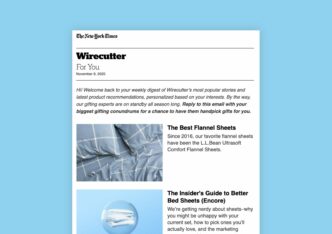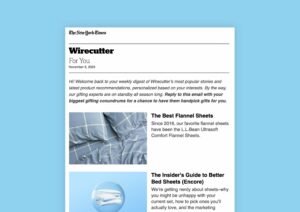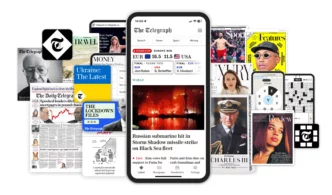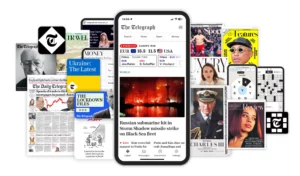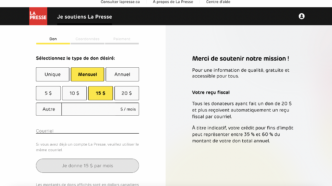
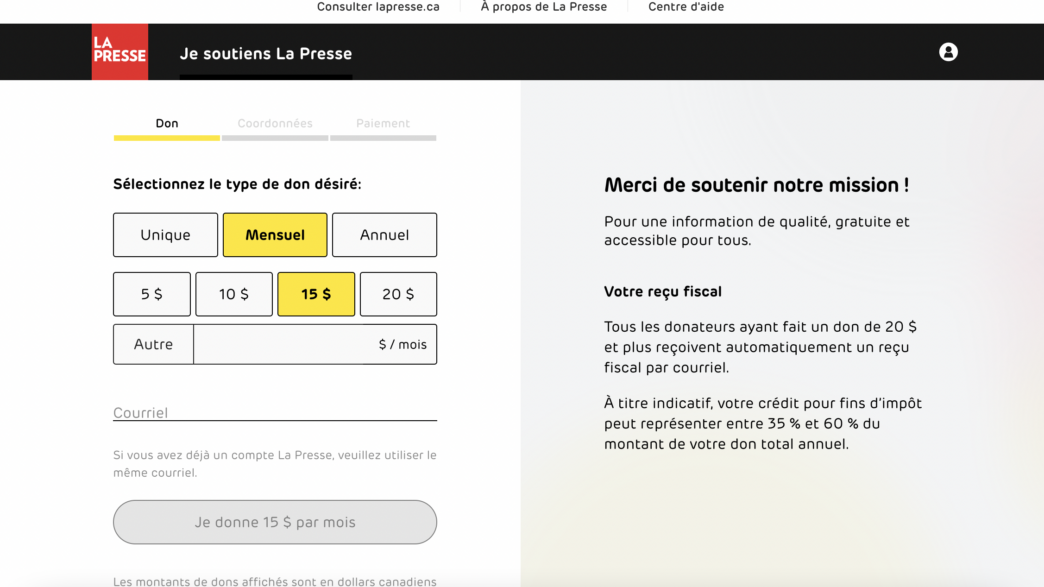
Montreal-based La Presse is a unique news organization. Long-time property of the Desmarais family, the legacy daily, which famously ditched its print edition for an iPad-only app in 2015, became a non-profit in 2018 and launched its philanthropic program a year later. The move stunned many observers -myself included- in Canada.
Five years into their new model, the daily is stronger than ever. I worked many years alongside Florence Turpault-Desroches, Vice-President of Communications and Philanthropy, as a journalist and managing editor at La Presse.
We caught up, and she took me through the steps of their unique formula: philanthropy, advertising, and high engagement of their readers.
Q: Hi Florence! La Presse is a free media, but also asks its readers to “subscribe” to read online. Can you explain what La Presse’s revenue model is?
A: La Presse is a 100% free model. However, we have what we call an “authentication readerwall”. We ask desktop users to create an account to read more than 3 stories online a month. 80% of articles read on line are read in an authenticated manner. We had a very rapid conversion rate when we implemented this wall. We do not plan, at this point, to be more aggressive on our platforms.
Q: What’s the mindset behind this “authentication readerwall”?
A: Creating reader accounts helps us recognize readers, personalize advertising, and personalize our relationship with our donors. The readerwall allows us to obtain data: it also allows us to better know our audience if we want to personalize our content or identify potential donors. We can also personalize our solicitation. The majority of our philanthropy is based on data segmentation: we do a personalized campaign, based on the donation, and what type of readers our donors are.
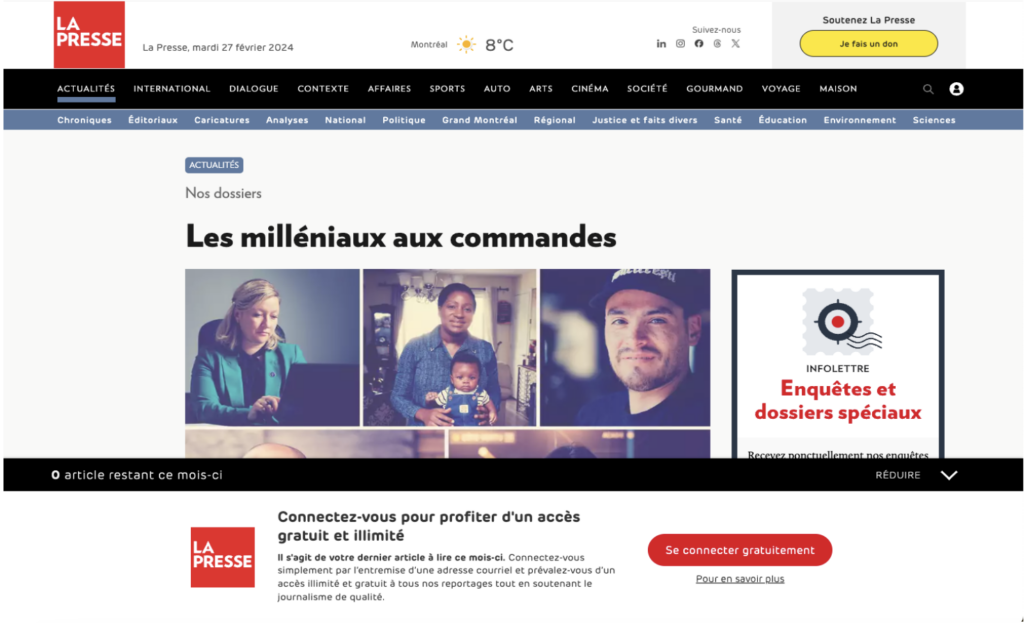
Q: I looked into your annual report. Philanthropy generates revenue, but most of your revenue still comes from advertising.
A: Indeed, but we don’t want to be dependent on a single source of income – advertising or donation. Diversifying revenue ensures that we don’t have only one source of income. The vast majority of our advertising revenues come from our iPad app. The reason is simple: the ads are much more engaging, interactive, and playful. Our readers also have exceptional time spent in the iPad app, so it is attractive for advertisers.
> The Audiencers is coming to Canada in on March 22nd! Find the agenda for our full-day Festival and reserve your spot
Q: Let’s talk about time spent. I’ll throw in some numbers: every day, 240,000 readers open the tablet app and spend an average of 40 minutes reading it. This is very high, especially if we compare it with the time spent on a mobile app.
A: Absolutely. Engagement makes all the difference even for our business model. The vast majority of our advertising revenues come from our iPad app. The reason is simple: the ads are much more engaging, interactive, and playful. Our iPad app is still our most important platform because the level of engagement is exceptional.
Q: Who is your audience on La Presse+, the tablet app?
A: It’s a mix of former print subscribers who migrated to the tablet: those readers will read every section in the app. They are highly engaged and they also are mainly our donors. Those readers are very valuable. In the iPad app, we put a lot of effort into graphics and visuals. There is a playful aspect, in the content and in the ads. It is not just text.
Q: Do you plan on replicating this very high time spent on your other platforms?
A: Absolutely. We want to work on engagement in 2024 to see if we can bring La Presse+’s success to our other platforms, desktop and mobile. We know these are short sessions. That raises many questions, including: is there a loyalty issue for the brand?
Q: La Presse launched several newsletters and now notifies its users of all kinds of news. Can you tell me more about the rationale behind those changes?
A: We realized that people used to go to news media to get informed in the past. But now, they expect us to come to them. It forced us to ask ourselves, how are we going to reach them? For us, it has been notifications and newsletters, which are expanding. We have over 950,000 subscribers to our newsletters, and it works well. It’s a way to reach out to readers to bring them back to us.
Q: Finally, the question of advertising revenue earned by Meta, Google, is also at the heart of many discussions in Canada about the future of local media. How do you stand out, what revenue growth (or decline) do you anticipate?
A: Our goal has always been for people to come directly to our platforms. When Meta banned news links from its platforms in Canada, we saw a decrease on our site, but it wasn’t drastic – and we found our users back on our platforms after a few months. In terms of revenue, we also ensured that we developed data tools to “compete” with US tech giants. But we can offer advertisers products based on ethically collected data, and that’s why our advertising revenue has increased. We recently launched a new platform; the goal was not to compete with web giants but to offer small businesses the possibility to buy advertising in La Presse.
Q: So what’s next for La Presse?
A: Since we are in good health, we want to develop and invest in journalism in Quebec. We want to expand our coverage in health. We also plan to have an office in Washington DC for the upcoming elections. The other thing we talk a lot about is getting closer to our readers. We talked about engagement, and how we at La Presse can make sure to get closer and respond in content to their needs.
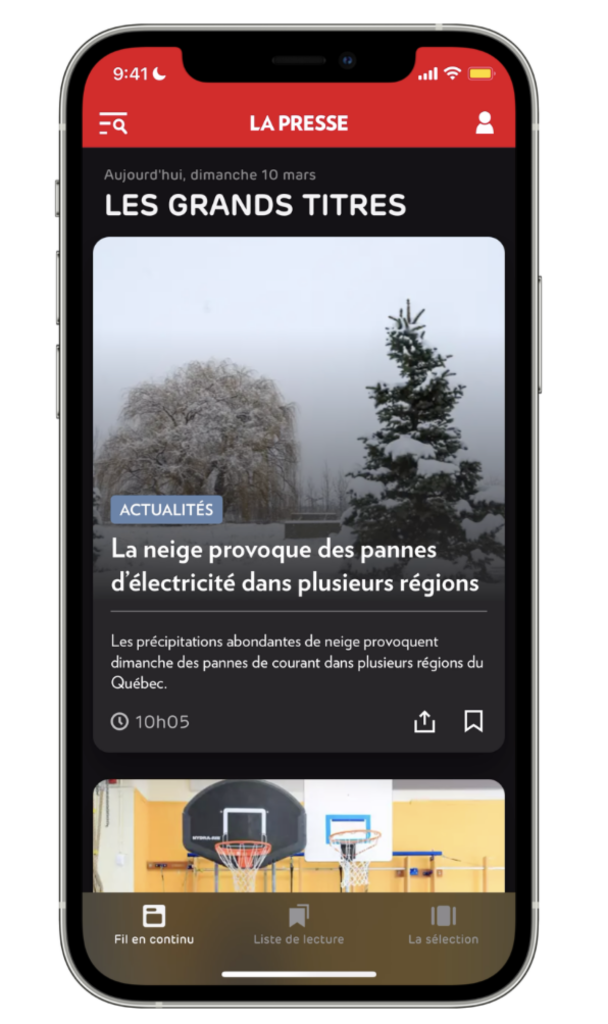
This interview has been translated from French to English and edited for clarity. Author used AI tools for copyediting (Grammarly).



